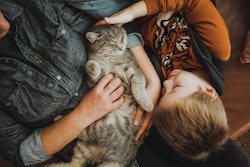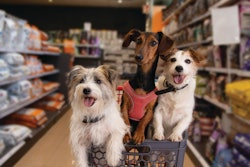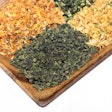
Packaged Facts’ January 2025 Survey of Pet Owners shows that high prices continue to cause significant challenges for pet parents across product and service sectors — and especially so in the case of pet food (42% of pet owners) and veterinary services (39%). Also of concern, though at lower levels, are the high cost of pet medications (25% of pet owners), of non-food pet supplies (22%) and of non-medical pet services (18%).
Moreover, the high cost of pet food presents significant challenges to high percentages of pet owners across generations and typical income levels:
- A slightly lower 38% of Gen X pet owners report significant challenges due to the high cost of pet food. Concern is uniformly higher, at 42%–43%, on either side of that middle-age Gen X divide — spanning Gen Zers and Millennials on the younger end, and Boomers at the senior end of the spectrum.
- A slightly lower 37% of pet owners with a household income of US$100,000+ report significant challenges due to the high cost of pet food. Concern is higher at middle-income brackets, at 42% of pet owners with a household income of US$60,000–$99,999, and highest at 45%–46% among pet owners with lower-to-modest household incomes below US$60,000.
Pet owners report increased spending across the board
Reflecting both high rates of price inflation and the stickiness of pet care spending among those who can pay for it, half of the Packaged Facts January 2025 survey respondents with two or more years as pet owners reported that pet food spending had increased over the preceding 12 months. The percentage of pet owners for whom pet food spending increased was therefore higher than the percentage for whom pet care spending had stayed “about the same” (at 43%) and far outweighed the percentage for whom pet food spending decreased or was cut back (at 7%).
Moreover, across all individual pet care spending sectors (pet food, veterinary services, non-food pet supplies and non-medical pet services), the percentage of pet owners reporting increased spending was dramatically higher in 2025 than in 2021 (see Table 1). In the case of pet food, 35% of respondents in our 2021 survey reported that their spending had increased over the preceding 12 months, compared with 50% in 2025. In the case of veterinary services, 29% of 2021 survey respondents reported that their spending had increased over the preceding 12 months, compared with 48% in 2025.
[TABLE 1]
TABLE 1: There is no doubt in consumers’ minds that they’re spending more on pet care when compared to several years ago, be it on food or veterinary care or anything in between.
Even back in 2021, the share of pet owners reporting increased spending was disproportionately high for pet food. For example, spending changes for non-medical pet services formed a bell curve in 2021, with only 14% reporting increased spending, the vast majority of 75% reporting that spending stayed about the same and 11% reporting decreased spending.
The potential for pet ownership in the U.S. — especially in the case of dogs, as the most popular but also expensive of common household pets — will not be realized until we get back to something like that bell curve for pet food and pet care spending overall.
Unfortunately, current trends are pointing in the opposite direction. Although inflation metrics haven fallen from their COVID-era peak, progress has stalled in recent months, and inflation expectations are back on the rise. Morgan Stanley (March 5, 2025), for example, projects that tariffs and a tight labor market will generate “slower growth, firmer inflation” sooner rather than later in 2025.
US dog, cat population growth slowed 2018 to 2024

















